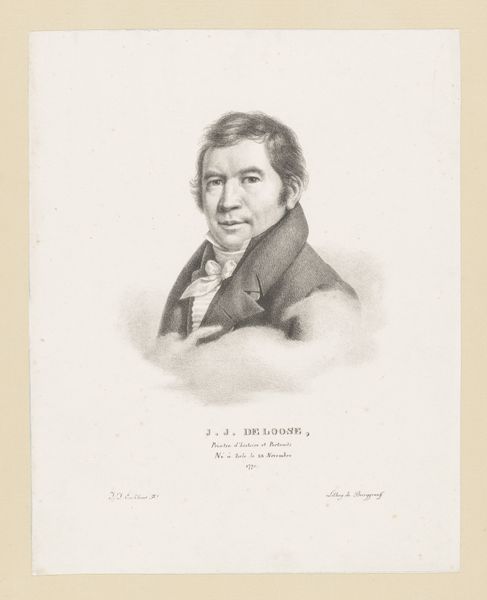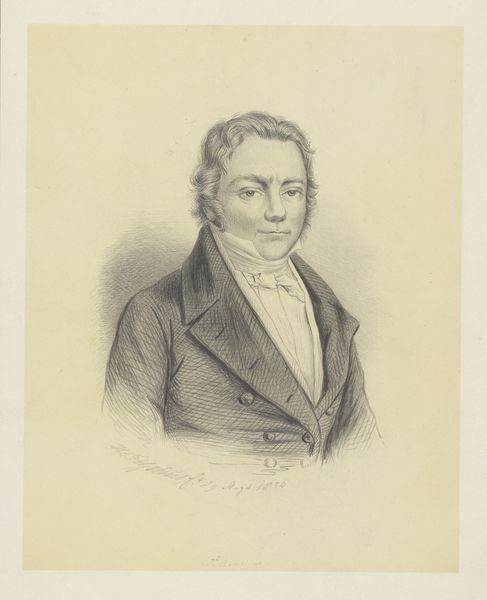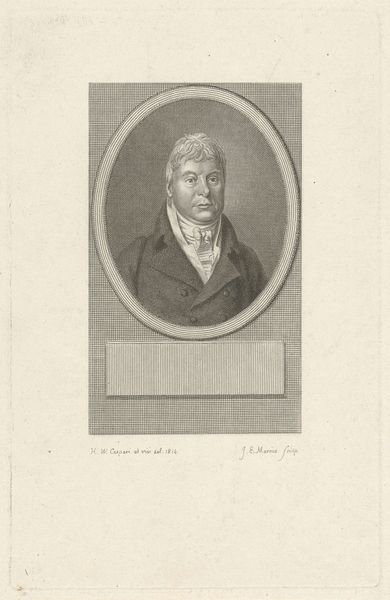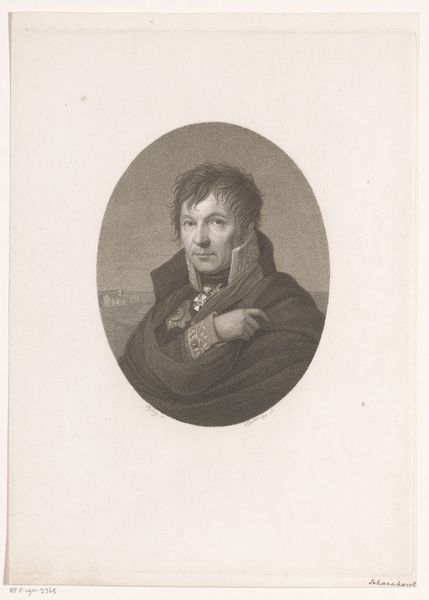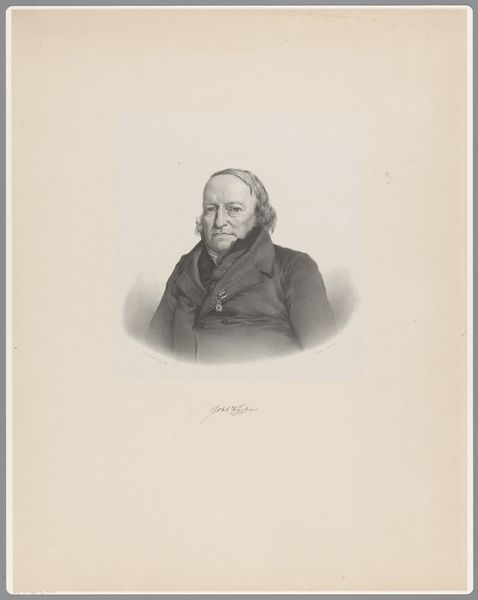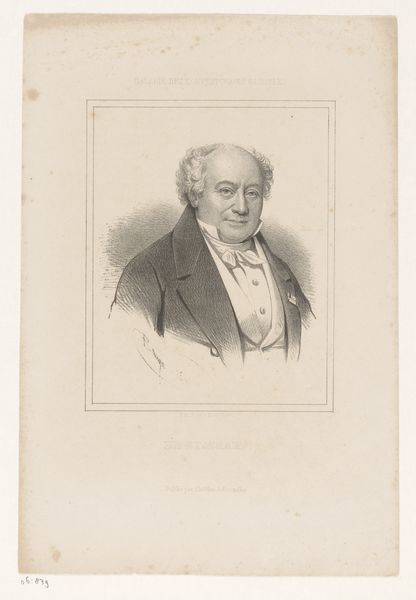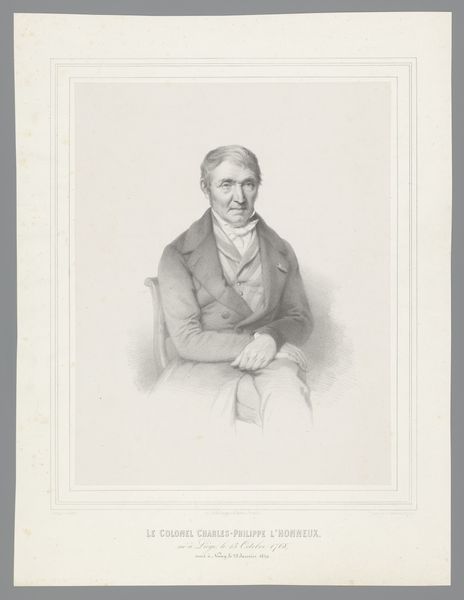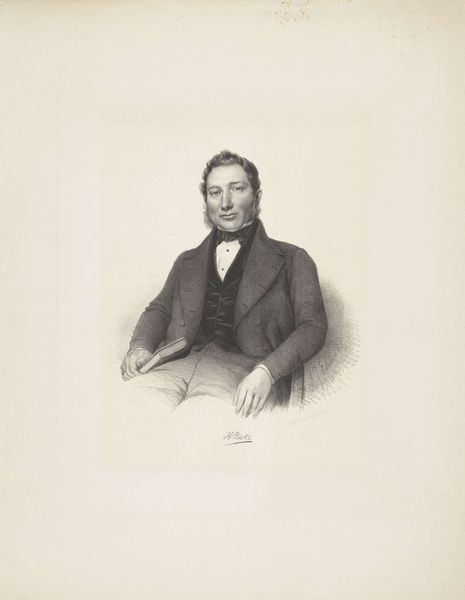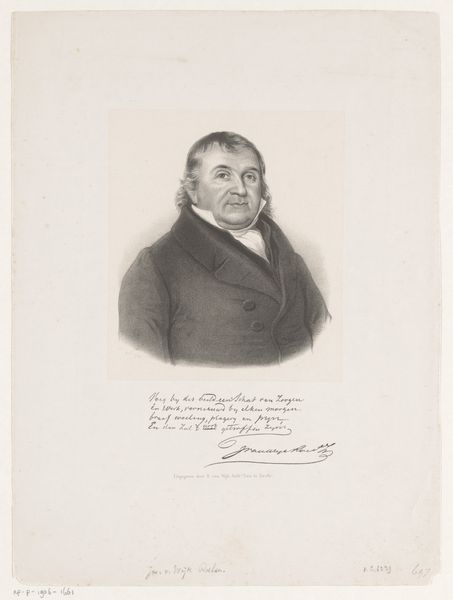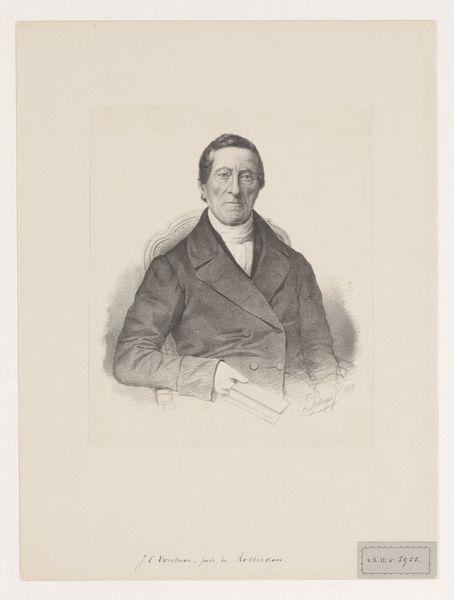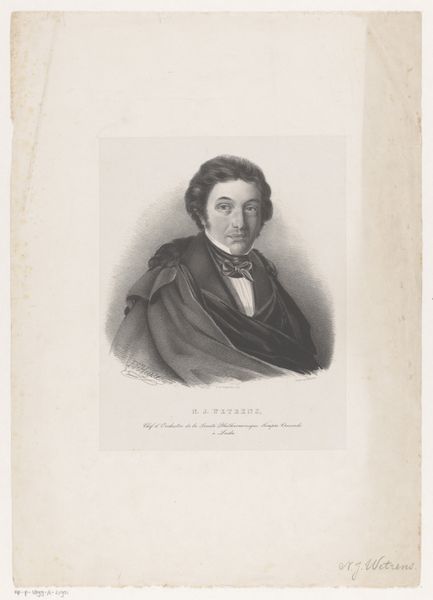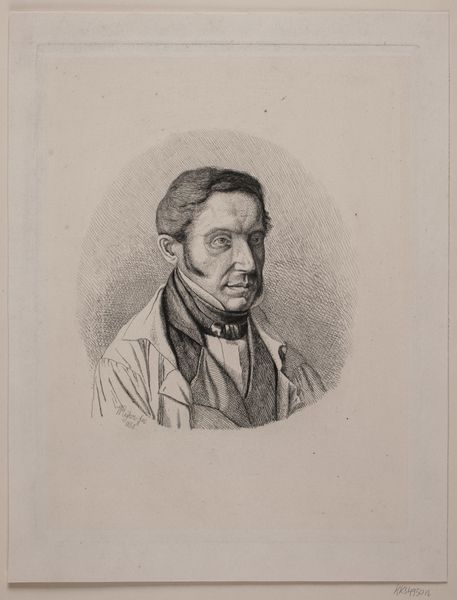
drawing, pencil
#
portrait
#
pencil drawn
#
drawing
#
neoclacissism
#
pencil drawing
#
pencil
#
academic-art
#
realism
Dimensions: height 184 mm, width 152 mm
Copyright: Rijks Museum: Open Domain
Curator: Hmm, imposing, isn't he? Almost makes you feel like you need to straighten your tie, even when you're just looking at a pencil drawing. Editor: Exactly! What you're feeling is likely intentional. We are viewing "Portret van Jacques Marquet de Norvins," created in 1841 by F. Richter. Norvins was a notable figure, and Richter captures that sense of authority, doesn't he? Curator: He does, though it's softer than you'd expect for someone wielding that kind of… unspoken power. There's something in his eyes that feels a touch melancholy. Maybe he knows the weight of those shoulders! And you can see it's realism, but with such clean lines – makes it very academic, very proper. Editor: Absolutely. It adheres to Neoclassical ideals which really reemerged in the nineteenth century— portraying Norvins in a style intended to convey virtue, seriousness, and an unshakeable moral compass. Note the control Richter demonstrates, that pencil is put to work here! It seems to elevate Norvins through an aesthetic of almost austere precision. Curator: Precision yes, but with such delicate work! The shading, especially around the face, is so subtly done, bringing real depth and life to the features, and he somehow manages to avoid flatness while using simple tones from the pencil. There's a real tenderness there that counterbalances the formal attire. Editor: That's a keen observation. What you describe resonates with the complexities of the period. Official portraits often had the objective of projecting authority, but that artistic goal was ever at odds with representing lived human experience and emotion. Here the work has landed between those expectations. The setting certainly speaks to that balancing act. We don’t get the pomp and circumstance expected from many portraits of the time period and political position. Curator: And maybe that is what makes it stand out? It whispers instead of shouts. It feels more human than just another stiff depiction of power. In all I do find myself strangely drawn in to Norvins and wonder who he was off camera. Editor: I concur. Richter has made Norvins accessible in some form. As an exercise in representing character and historical forces with little more than a pencil, it does open questions around the construction of character and its function to project a position, status or ideology. Curator: Precisely; all in all, not a bad question to pose with just a humble piece of graphite, eh? Editor: Not at all! A fascinating glimpse, indeed.
Comments
No comments
Be the first to comment and join the conversation on the ultimate creative platform.

